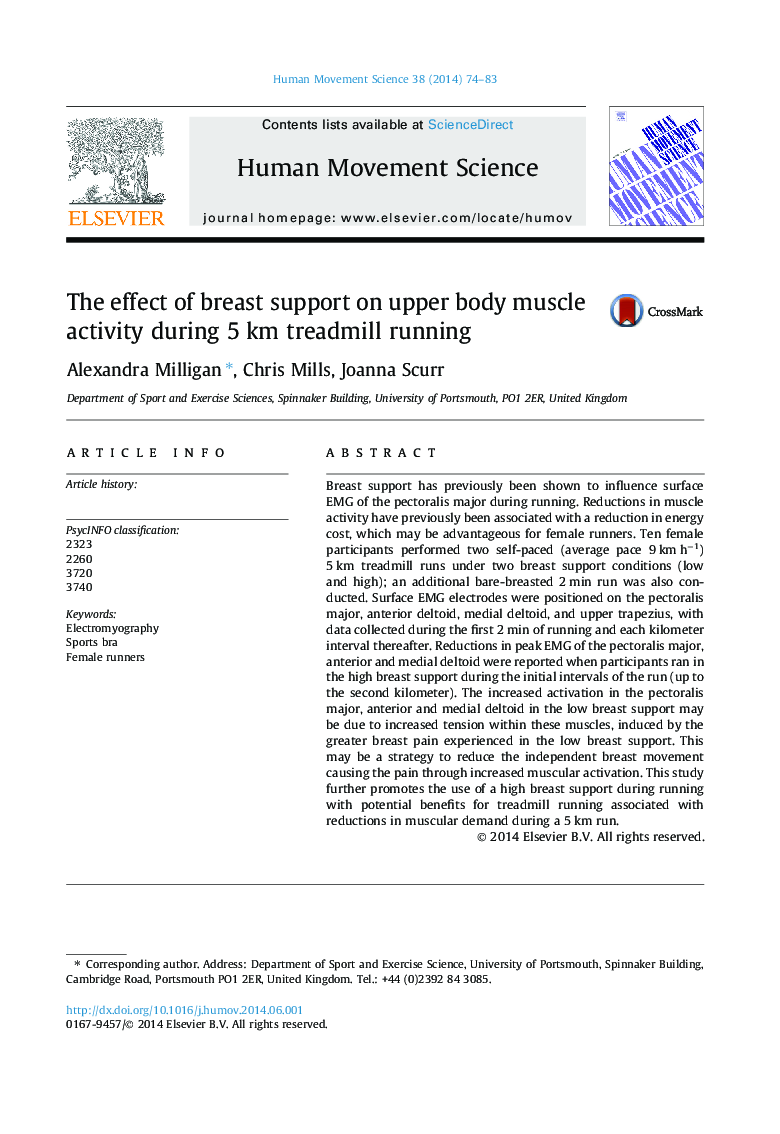| Article ID | Journal | Published Year | Pages | File Type |
|---|---|---|---|---|
| 7292258 | Human Movement Science | 2014 | 10 Pages |
Abstract
Breast support has previously been shown to influence surface EMG of the pectoralis major during running. Reductions in muscle activity have previously been associated with a reduction in energy cost, which may be advantageous for female runners. Ten female participants performed two self-paced (average pace 9 km hâ1) 5 km treadmill runs under two breast support conditions (low and high); an additional bare-breasted 2 min run was also conducted. Surface EMG electrodes were positioned on the pectoralis major, anterior deltoid, medial deltoid, and upper trapezius, with data collected during the first 2 min of running and each kilometer interval thereafter. Reductions in peak EMG of the pectoralis major, anterior and medial deltoid were reported when participants ran in the high breast support during the initial intervals of the run (up to the second kilometer). The increased activation in the pectoralis major, anterior and medial deltoid in the low breast support may be due to increased tension within these muscles, induced by the greater breast pain experienced in the low breast support. This may be a strategy to reduce the independent breast movement causing the pain through increased muscular activation. This study further promotes the use of a high breast support during running with potential benefits for treadmill running associated with reductions in muscular demand during a 5 km run.
Keywords
Related Topics
Life Sciences
Neuroscience
Cognitive Neuroscience
Authors
Alexandra Milligan, Chris Mills, Joanna Scurr,
